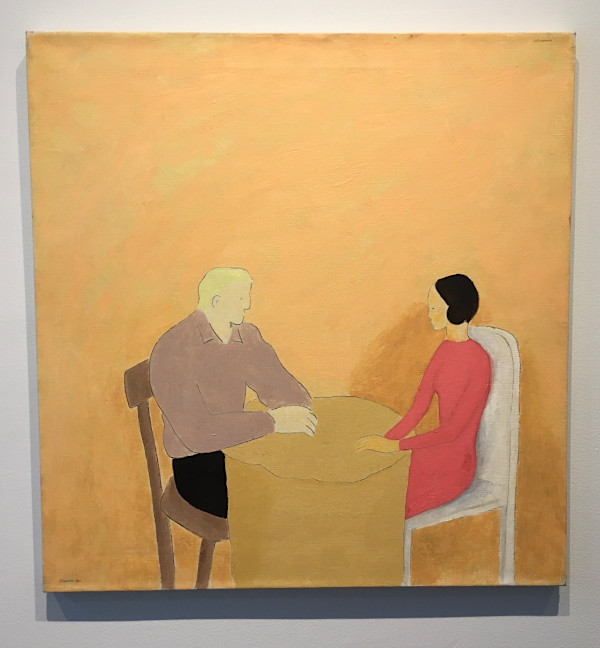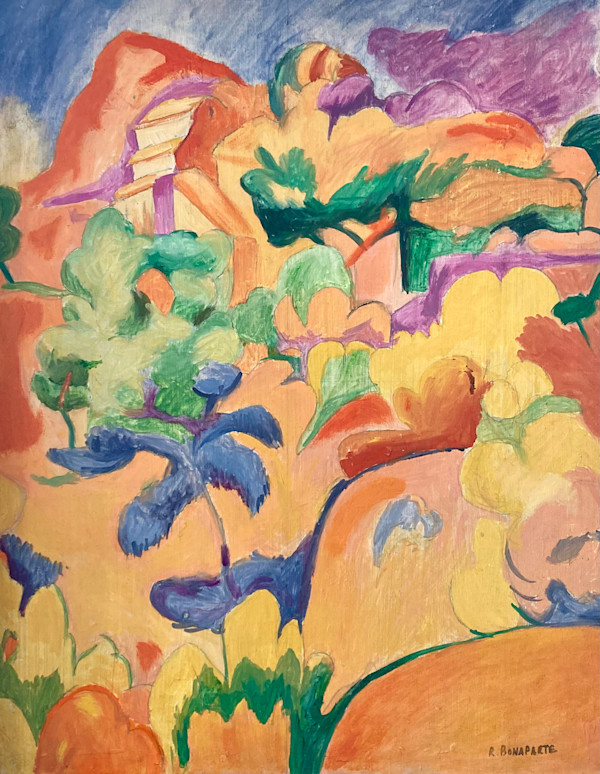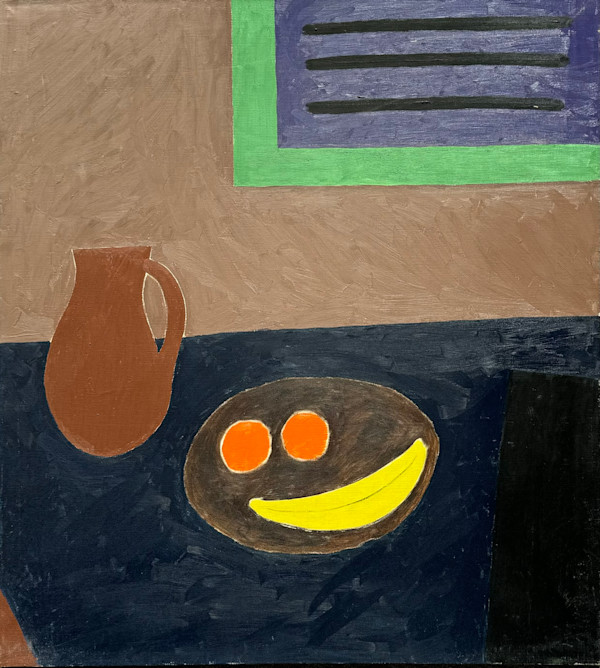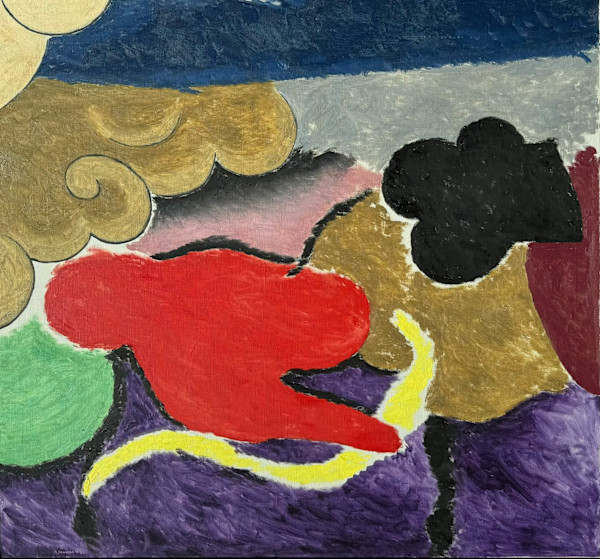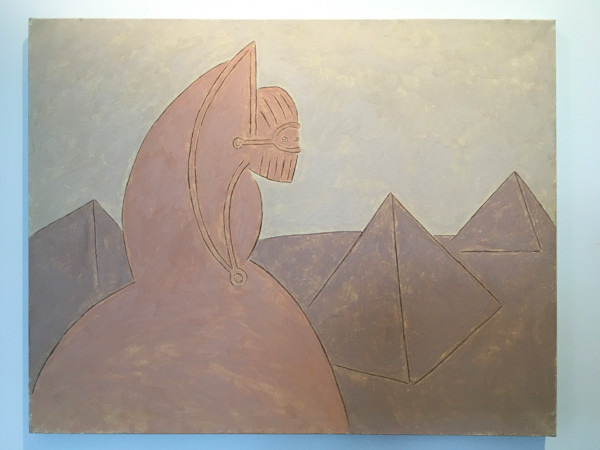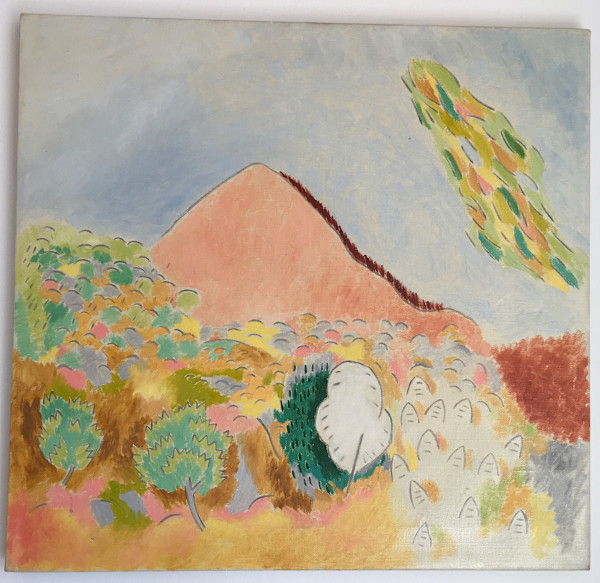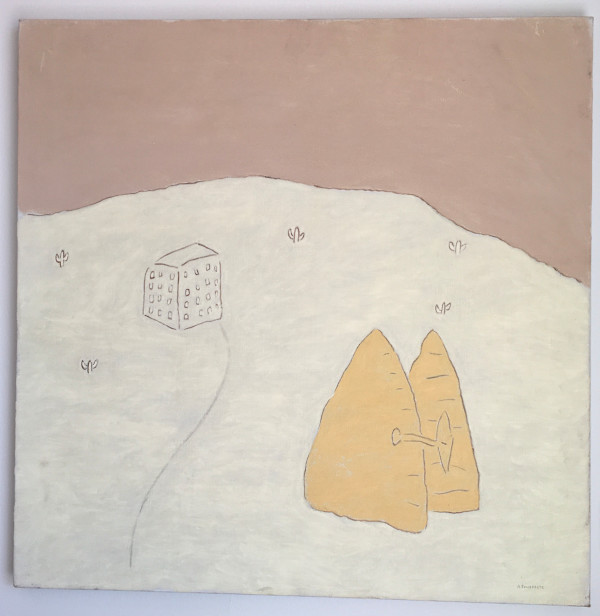- Robert Bonaparte
- Landscape and Symbols, 1980
- Oil on Linen
- 31 x 24 x 1 in (78.74 x 60.96 x 2.54 cm)
- Framed: 32.5 x 25.5 x 2 in (82.55 x 64.77 x 5.08 cm)
- $10,500
This 32.5 inch x 25.5 inch abstract work was done by Robert Bonaparte in 1980. Painted in an abstract manner, the subject matter is ambiguous yet symbolic and perhaps representative of a surreal landscape. Starting at the bottom of the composition, the horizon line is positioned very low, roughly taking up 1/10th of the composition from the bottom edge. The "ground" in this tenth of the canvas, is a dark yellow color, with sort of opaque, non-solid, black vertical lines that fill the space. On the left side of the canvas, above the horizon line, is a small ambiguous, organic shape that is painted with a slightly oranger yellow than that of the ground. She shape is outlined by multiple short, curved lines, one of the curved lines comes to a sort of half spiral within the shape while another is positioned alone within the form. To the right of this shape, are eight vertical stripes, painted light brown and not drawn with a particular straight edge. They reach from the horizon line to about 1/4th of the canvas, where they meet two other forms that are depicted within the composition; a non-straight edge rectangular shape that emerges from the right edge of the canvas, and an organic, ambiguous shape that emerges from the left edge of the rectangular shape just mentioned. The rectangular shape is vertically oriented, positioned roughly halfway up the canvas and is painted a dark blue/purple color with 24 small white stars. The form to the left is smaller and resembles an elongated football; it is horizontally oriented, is painted green and has 11 slightly diagonal dark green lines within the shape. Above the green form just described, is yet another shape. This shape is made up of different components; it is a circle, painted with the same orange yellow as the ambiguous shape first described, and inside of this circle is a brown star. Inside the brown star is a bright yellow circle and on the outside of the encompassing circle, there are two, leaf-like or raindrop-like shapes that, from their base, stem off of the circle, perhaps aiming to represent wings. This interpretation of these shapes as wings is also supported by various small lines that surround the shape, seemingly indicating motion. There is also another, more or less "form", above the blue/purple, star-filled rectangular shape. It is a small patch of light grey paint that has no linear outline, as all of the other shapes do, and emerges from the top edge of the rectangle, coming to a short, rounded curve at the top. The last form depicted in the painting is positioned in the upper half of the work, and slightly to the left of the center. It is slightly bigger than the two organic shapes and slightly smaller than the rectangle. It is comprised of a few different aspects; it is a dark blue/purple circle, with an outer ring that is orange ish.
In the vibrant aftermath of WWII, amidst an Oklahoma City blooming with cultural resurgence thanks to New Deal initiatives, a young Robert Bonaparte found his calling alongside his childhood friend and neighbor, Ed Ruscha. While Ruscha's works found global acclaim, Bonaparte's creations remained a treasured secret, known only to a select group of collectors and friends. Born in 1933 in Oklahoma City, Robert Bonaparte emerged as a pivotal yet under-recognized figure in the abstract art scene. From an early age, Bonaparte formed a profound friendship and artistic dialogue with Ed Ruscha, a relationship that would influence both artists' careers. After graduating from the University of Arizona in 1956, Bonaparte's thirst for knowledge took him to Rome, Italy, where he furthered his studies in art, broadening his perspective and technique. In 1959, alongside a cohort of Oklahoma artists, he relocated to California, where his artistic expression flourished. Bonaparte's work, known for its vibrant landscapes and introspective still lifes, has graced galleries worldwide, from Galleria "La Vetrina" in Rome to the Fred Jones Jr. Museum of Art in Norman, Oklahoma, showcasing his international acclaim and versatility. Despite the quieter recognition compared to his contemporaries, Bonaparte's contributions to the art world are invaluable.
- Subject Matter: Abstract Landscape with Shapes



